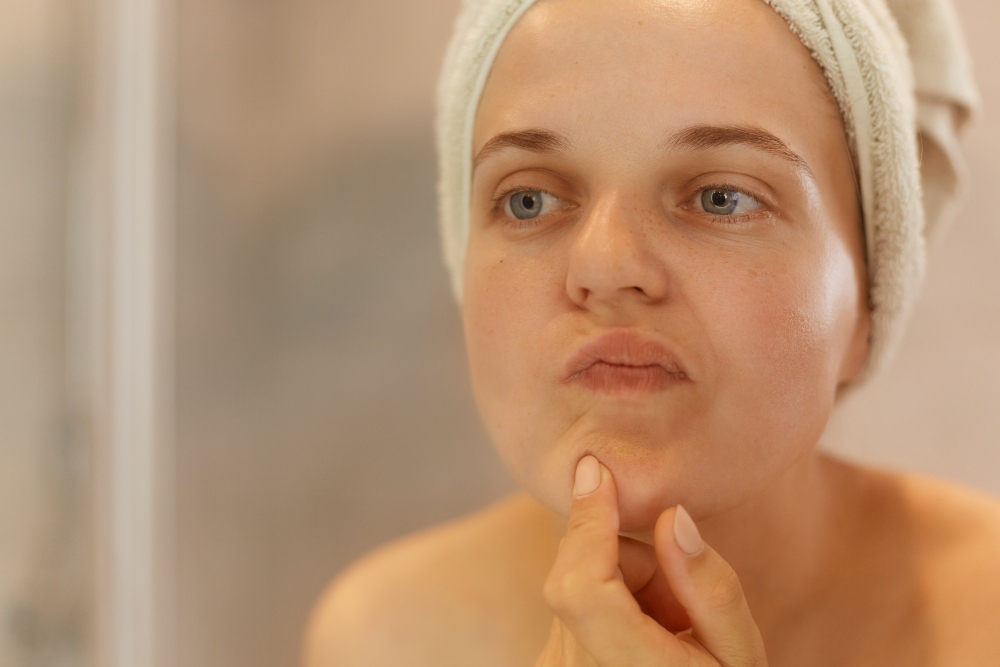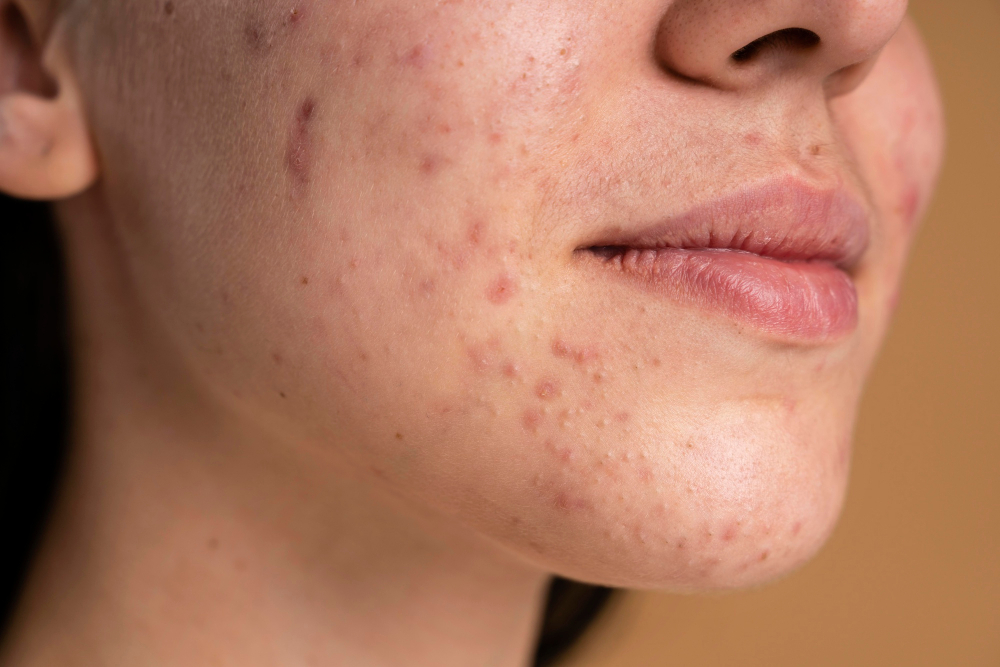Considering facial waxing? This guide dives into the essentials of face waxing, a popular method for achieving smooth, hair-free skin. Face waxing can efficiently remove unwanted hair from areas like the eyebrows, upper lip, and chin, providing longer-lasting results than shaving. However, weighing the benefits against potential skin reactions or sensitivity is essential.
Whether you’re contemplating using face wax strips, exploring a full face waxing, or searching for the best face wax for sensitive skin, understanding the process and aftercare is crucial for optimal outcomes.
Does Face Waxing Loosen Skin?

No, Face Waxing doesn’t loosen skin. The concern that face waxing may cause skin loosening is widespread yet largely unfounded. There is minimal scientific evidence to suggest that waxing leads to saggy skin.
The impact of waxing on skin tightness varies depending on several factors, such as the wax type and application technique. Hard wax is often seen as gentler, potentially reducing the risk of irritation and skin loosening, compared to strip wax.
Skin condition after waxing also depends on factors like skin and hair type. While concerns over skin loosening persist, proper technique and aftercare can significantly mitigate these risks. For those worried about the effects of waxing, alternatives include shaving, depilatories, laser hair removal, and electrolysis. In summary, when done correctly, face waxing does not inherently lead to skin loosening, with the technique and skin care post-waxing playing pivotal roles in maintaining skin elasticity and health.
Does Face Waxing Cause Open Pores?

No, face waxing does not cause open pores. Pores are a natural part of the skin’s structure, housing hair follicles and sebaceous glands.
While waxing removes hair from the root, it does not create new pores. Post-waxing, you may notice temporary bumps, a normal reaction to hair removal, which is a mistake for new pores. These bumps, resulting from temporary irritation or swelling of the pores, typically subside quickly.
Maintaining a good skincare routine post-waxing, including using calming and protective products, can minimise any temporary changes in pore appearance. It’s crucial to understand that any visible changes to pores immediately after waxing are temporary, stemming from the skin’s response to the hair removal process and not structural changes to the pores themselves.
How To Close Pores After Waxing Face?
After waxing, pores may appear more prominent, necessitating steps to minimise their appearance for smooth, flawless skin. Here are effective tips:
- Keep Your Pores Clean: Post-wax, cleanse your skin to remove sebum, dead skin cells, and impurities, aiding in quicker pore size normalisation.
- Icing Method: After a thorough cleansing, reduce inflammation and shrink pores by applying ice to the waxed area.
- Use Pore-Reducing Toners: Select toners with ingredients like Niacinamide and Hyaluronic Acid, which calm the skin and reduce post-waxing hyperpigmentation.
- Moisturize and Hydrate: Improving skin texture and elasticity through hydration makes pores less noticeable. Opt for a suitable moisturiser for waxed areas.
- Use Sunscreen Before Going Out: Sun protection is critical post-waxing to prevent sensitivity and damage. Apply broad-spectrum sunscreen to waxed areas before outdoor exposure.
Incorporating these steps can enhance your skin’s appearance post-waxing, though it’s natural for pores to revert to their original size within a few days. These practices and a proper skincare routine promote smoother, more refined skin, addressing common concerns like getting rid of waxing bumps on the face or preventing folliculitis after waxing. Whether you’re using face wax strips or a face wax kit, and especially when exploring how to naturally wax your face at home, these tips ensure the best possible outcomes for your skin.
Home Remedies For Bumps On Face After Waxing
Waxing can sometimes lead to bumps on the face, a common concern for many. These bumps, often resulting from ingrown hairs or razor bumps, can be uncomfortable and unsightly. However, there are effective home remedies to soothe and manage these bumps.
Stop Shaving Temporarily
Giving your skin a break from shaving can allow bumps to heal naturally. Continuing to shave over irritated areas can exacerbate the issue, leading to more bumps and discomfort.
Use Salicylic Acid
Salicylic acid, a beta-hydroxy acid, is excellent for unclogging pores, removing dead skin cells, and reducing inflammation. It’s available in cleansers, toners, and lotions and can aid significantly in healing razor bumps.
Apply Glycolic Acid
Glycolic acid, an alpha hydroxy acid, promotes the shedding of the outer skin layer. This action helps reduce hair curvature, minimising the risk of ingrown hairs by accelerating skin renewal.
Try Face Scrubs
Mechanical exfoliation with face scrubs can remove dead skin cells that trap hairs. Opt for scrubs with gentle ingredients like sugar or salt, especially if you have sensitive skin.
Gently Brush the Skin
A soft brush can guide hairs out of pores, preventing them from becoming trapped. This technique can also train hair to grow in a single direction, reducing ingrown hairs.
Use a Warm Washcloth
A warm, wet washcloth applied to the affected area can soften the skin and help draw out ingrown hairs. This method is especially effective when used in combination with gentle brushing.
These home remedies can manage and reduce the appearance of bumps after face waxing. However, consulting a healthcare professional is recommended for prescription treatments or advice for persistent or severe cases.
Final Words
Deciding whether to wax your face involves considering the potential for smooth, hair-free skin against the risk of irritation or bumps. Our guide covers everything from choosing the best face waxing strips, like Nad’s, Veet, or Nair, to managing common concerns like bumps or irritation.
Whether looking at full face waxing, using a face wax kit, or seeking the best face wax for sensitive skin, proper technique and aftercare are crucial. Home remedies provide relief for those experiencing post-waxing bumps, ensuring your waxing experience leads to the desired smooth, flawless finish.
FAQs
Is It A Good Idea To Wax Your Face?
Waxing your face can be an excellent idea for men and women looking to achieve a flawless glow with minimal effort. Facial waxing removes unwanted hair and can contribute to a radiant appearance by hydrating the dermal layer. Furthermore, this process can aid in reducing pigmentation and diminishing blemishes, making it a popular choice for those seeking clear, smooth skin. Whether using face wax strips, a full face waxing kit, or exploring the best face wax for sensitive skin, waxing offers a viable solution for enhancing your complexion.
Is It OK To Wax Face After Facial?
Before considering waxing, it is advisable to wait until your skin has fully healed after a facial. Waxing exerts mild trauma on the skin, which, while typically subsiding quickly, can lead to unnecessary pain and damage if the skin has not properly recovered from a facial. To ensure the best results and to avoid complications, allow your skin adequate time to heal post-facial before undergoing any waxing treatment.
What Type Of Wax Is Best For Face?
Experts recommend hard wax for facial use, as it is thicker than soft wax and adheres well to short, coarse hair without needing waxing strips. Hard wax hardens on the skin and can be removed by hand, making the process less painful and ideally suited for sensitive areas like the bikini line, underarms, and face. This type of wax is particularly beneficial for sensitive skin, offering a gentler alternative to traditional strip wax.
Will I Get Acne If I Wax My Face?
It is not uncommon to experience pimples after waxing due to the skin’s exposure to friction, bacteria, and high temperatures during the waxing process. These factors can compromise the skin’s barrier function, potentially leading to breakouts. To mitigate this risk, maintain a clean waxing environment, use products designed to soothe and protect the skin post-waxing, and consider consulting a professional if you have concerns about waxing and acne. Proper aftercare, including calming and antiseptic products, can help prevent folliculitis and minimise the chances of developing a waxing rash on the face.

